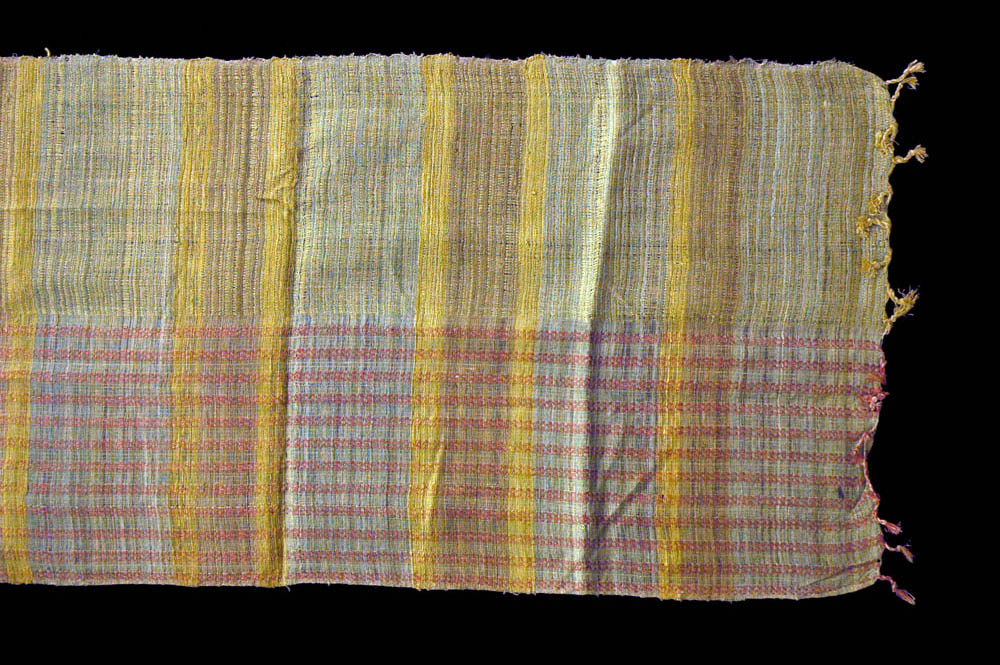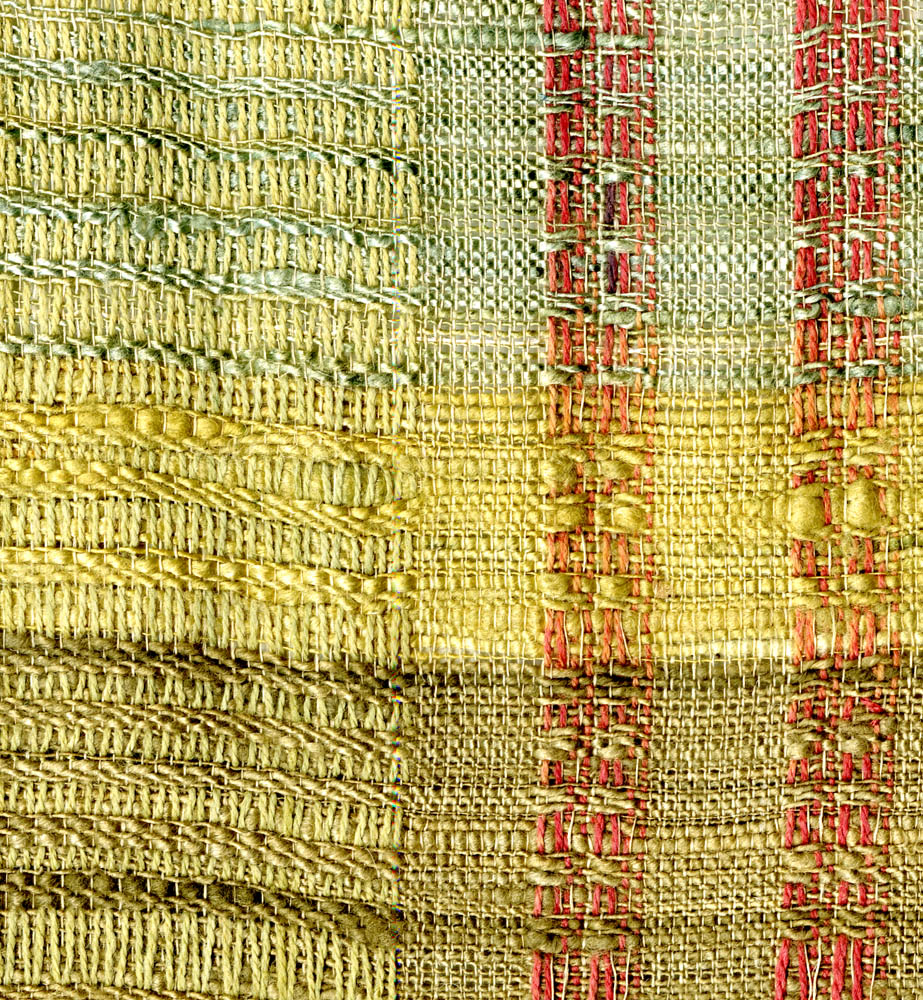Antheraea proylei Jolly
Temperate Tasar Silk
Also called oak tasar silk in India, this silk is a relatively recent innovation. In the 1970s Indian sericulturists began to culture strains of wild silkworms that were derived from crosses between the Chinese Antheraea pernyi and the Himalayan Antheraea roylei Moore. The so-called hybrid was named Antheraea proylei Jolly. However, Peigler (2012) compiled compelling evidence that A. pernyi is a cultivated form (in many varieties) derived from the wild A. roylei, so the two entities are the same species biologically. Therefore, strains of proylei are not really hybrids, but represent more stocks of A. pernyi.
This new type of silk was greeted with a lot of enthusiasm in the 1970s and 1980s, and was intended to exploit the abundant fields of oaks in the sub-Himalayan belt (Goel & Krishna Rao 2004). Over time, the strains began to decline (Srivastav & Thangavelu 2005, pages 101–104), and now this type of wild silk is mainly cultivated in three small states in India: Manipur in the Northeast and Uttarakhand and Jammu & Kashmir in the North. It is produced on a very limited scale, and merchants usually mix it in with tropical tasar in the silk trade in India. The natural color of the silk is usually a grayish brown color, but sometimes it is light beige like Chinese tussah. It can be reeled or spun. The samples illustrated here were obtained directly from India from reliable sources.
Description: Women's wrapper with temperate tasar silk (Antheraea proylei, a cross between A. pernyi and A. roylei). Hand-woven in 2010 in Uttarakhand. The handspun weft is temperate tasar, and the warps are temperate tasar and eri (Samia ricini) silks, both handspun. Colors are from natural vegetable dyes. Received directly from India in October 2010. Production Location: Uttarakhand, India Measurement: |
References
Chutia, Bhuban Chandra & L. N. Kakati. 2011. Biology and rearing performance of Antheraea
roylei Moore (Lepidoptera: Saturniidae), a wild silk moth in Nagaland, India. Bulletin of
the Indian Academy of Sericulture 15(1): 63–72.
Goel, R. K. and J. V. Krishna Rao. 2004. Oak tasar culture—aboriginal of Himalayas. A.P.H.
Publishing Corp., New Delhi. xii + 247 pp.
Peigler, R. S. 2012. Diverse evidence that Antheraea pernyi (Lepidoptera: Saturniidae) is
entirely of sericultural origin. Tropical Lepidoptera Research 22(2): 93-99. PDF
Srivastav, P. K. and K. Thangavelu. 2005. Sericulture and seri-biodiversity. Associated
Publishing Company, New Delhi. xvii + 254 pp., 48 color figures.




